Over the last few months, we’ve had the pleasure of welcoming our collaborator and advisory board member Elena Lazos Chavero to TABLE’s Oxford office. Elena is a social anthropologist based at the Universidad Nacional Autónoma de Mexico since 1992 whose work focuses on rural conflicts and development, food sovereignty, the institutional dynamics of social-ecological systems, and much more.
In a fascinating discussion over a cup of tea this autumn, TABLE researchers Tamsin Blaxter and Hester van Hensbergen spoke with Elena about her career, the complexities of Mexican food politics, and the ever evolving meanings of food sovereignty and food security.
You can read the conversation, which has been edited for length, below.
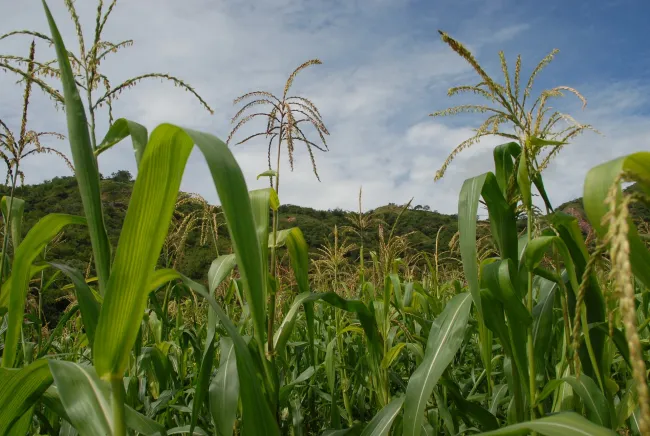
So how did you come to work in food and food systems?
I have a biology background, so my initial interest was in the conservation of rainforests and its relationship with agriculture. During the 1980s, while I was still a student, I worked with a famous Mexican agronomist, Efraím Hernández-Xolocotzi. He was one of the main opponents of the Green Revolution at that time, and he was interested in recovering traditional systems of agriculture and food production. We did fieldwork in Zongolica, Veracruz. It’s cold and mountainous, and one of the poorest regions of Mexico. We were working with the Nahua people, who cultivated the traditional milpa system (the intercropping of maize, beans, squash, chilli, tubercules and wild edible plants). Our research question was why is productivity so low and why is there so much poverty?
There were a lot of contradictions to unpack: there was such a sense within the academic community and local NGOs of the milpa system as this glorious Mexican heritage, with the Mayan milpa declared as a Globally Important Agricultural Heritage Systems by the FAO. But because of stagnated maize prices and the lack of national policies to support small-landowners, on the one hand, and climate change - principally droughts and soil erosion, on the other, the milpa system has undergone a transformation. Little by little it has been replaced by maize monocultures, and even in the rural communities that were still cultivating the milpa system, there was a lot of poverty and poor nutrition. Peasants have to invest more labour in milpas to maintain the agrobiodiversity than in maize monocultures. As ultra-processed food became popular and cheaper, peasant families and indigenous families were buying more pasta and refreshment drinks. The food industry developed many commercial strategies to replace local food systems (they offered credits and refrigerators for Coca Cola sales, for example). This hadn’t been happening in the 1960s. The process started around the 1980s. Then, suddenly, there was Coca Cola everywhere. Even in places without roads. Meanwhile, the water supply was becoming more polluted (from mining and agrochemicals), so of course people jumped very easily to the consumption of refreshments.
Our professor was focused on the technical interventions, but I started to consider the social and political problems more.
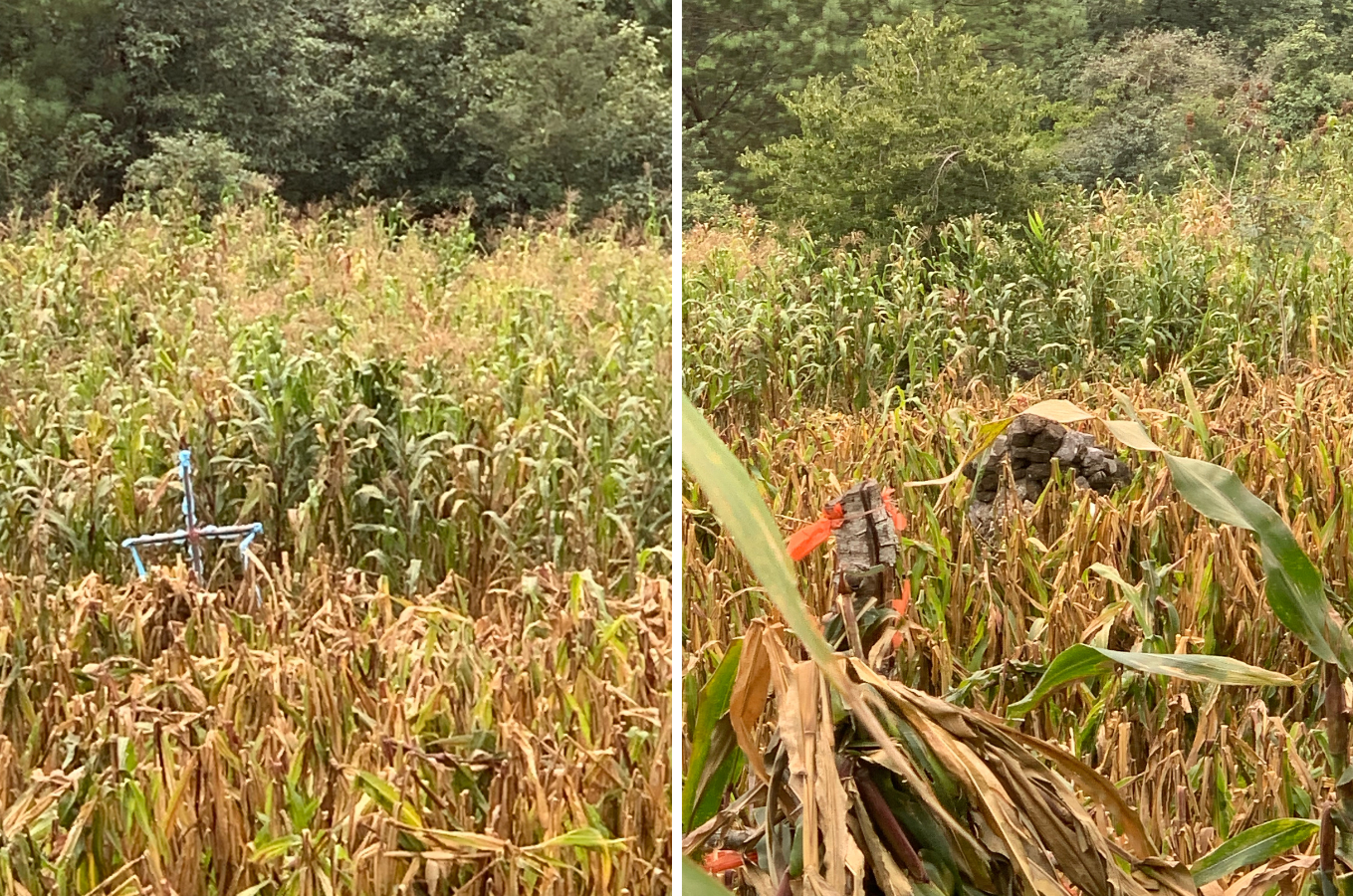
Photos of the milpa system, taken in the Ayuuk (Mixe) territory in Oaxaca, Mexico in July 2023. Photos provided by Elena Lazos Chavero.
So, your professor was a critic of the Green Revolution, but what was the attitude towards it in Mexico in general at that time. Was it all part of a modernising dream, or something else?
Well Mexico was one of the targets of the Green Revolution, so new maize varieties and maize hybrids arrived. There was a strong narrative about the need to produce more maize to be self-sufficient for a growing population. There was a big divergence in Mexico created by the GR though, between the Northern and some central parts of Mexico that had irrigation systems and so could start planting the new maize hybrids, and the rest of the country that was reliant on rain-fed production. In the North, the yields are as high as Iowa maize farmers because of irrigation and high inputs of fertilisers. So, after the Green Revolution, grosso modo, there were two Mexicos. The big landowners with high production of maize, as well as horticultural products for export to the United States. And then the other Mexico, which is more in the south and centre of the country, where there wasn’t so much irrigation, it’s more hilly, high mountains, high biodiversity, high agrobiodiversity, and it was more populated by indigenous people who were cultivating the Milpa system.
And in that second Mexico, they were being turned from self-sufficient producers into consumers of imported, heavily processed beverages and other goods?
Yes, in general, that was the trend, not in all places and not with the same intensity. But that’s what brought me to thinking about the food system and trying to understand these contradictions. I was looking at the food system and looking at who was pushing this industrial transformation of food. The answer was a mix of stakeholders; big landowners, industrial people with land origins, as land was the origin of their power, but also foreign industries, mainly from the US that wanted to “modernise” Mexico in order to be the cheap providers of horticultural and fruits and to be the consumers of their food industry of high calorie content. They were the people that were governing Mexico, driving the transformation of agriculture and food systems, and collaborating with North American industry.
So is that when a conversation about food sovereignty and food justice emerged in the universities?
In the 1970s, the peasant movement in Mexico was very strong. They were struggling for land, for good prices, and for a better market system, because the market was controlled by powerful middlemen. There were really two types of peasant organisations: there were those that were more controlled by the government - Confederación Nacional Campesina (CNC) and Confederación Campesina Independiente (CCI) - and then there were the small independent peasant movements across different regions, which were coordinated by the Coordinadora Nacional Plan de Ayala (CNPA). The Plan de Ayala refers to a revolutionary document written by Emiliano Zapata during the Mexican Revolution. They were reviving the revolutionary name, and they wanted to stay independent from the government. They were being criminalised and heavily policed, but it was also a very strong movement, they brought protests to Mexico City, and that’s when we got really involved in the universities as well. We were participating in the demonstrations, helping to write documents, and organising against NAFTA in the 1990s. And then there was La Vía Campesina, and some organisations wanted to be involved with it, and others chose to remain independent. It was a really important moment, though, because Vía Campesina established the idea of food sovereignty at that time. That’s when a real split happened, between those who talked about food sovereignty, and those who talked about food security, which was the narrative coming from the FAO and international organisations, and in Mexico it was represented by the organisations that were the more co-opted ones.
So, with regards to that difference you saw between different peasant organisations and their different food security and food sovereignty framings. Did that represent corporate capture, or did it represent real differences of opinion in the farming communities? Were there people who really were convinced by the Green Revolution arguments?
Yes, of course, the coopted organisations were following corporate narratives. “We need more production to feed more people” was their main idea. So, some organisations within the food security discourse will insist on being more productive over all. Other organisations were more worried of maintaining the maize landraces and agrobiodiversity. There was a lot of heterogeneity among regional organisations. In the 70s and 80s, peasants in the CNPA were also worried about their maize yields, they were worried about how to be self-sufficient, and they were asking themselves the question whether they should use agrochemicals. They weren’t all pro landrace crops or agroecology. Often, they were fighting to have agrochemicals, but at better prices. But of course, you had a lot of regional and social patchworks.
We’ve talked before about the idea that, if you are a poor farmer, you might be more willing to take risks, on say, a transgenic crop that might have a very high yield to dig you out of a situation that isn’t tenable. Or you might be willing to take short term wins, rather than worry about the long term. Was that an element of the conversations?
Yes, I think you’re underlining an important issue. Risk and uncertainty are always important in agriculture, and even more so in regions with high weather instability. So you need strategies for managing risk. And one of the strategies then was, yeah, if they are promising this transgenic maize will be more productive or even drought resistant, then why not try it? Of course, we now know that transgenic maize is not more productive, and that the transnational enterprises didn’t have any variety that was drought resistant, that was just a claim in the discourse. But yes, I think it is in the nature of being a farmer to be willing to try these new varieties and techniques, at least as a route to more secure production in the short term.
Let’s jump back to this close relationship between academics and the peasant movements that you were describing earlier. It’s quite different to the world of academia we inhabit here (in Oxford in the 2020s), where the default, I think, is that academics don’t often have a close relationship with activism. Or, if there is a relationship, it’s at least a contested issue. What’s your sense of that relationship between academia and activism and how it’s changed?
As we live in such different realities, I think that we ask very different research questions. As a researcher in Mexico, when we go out into the rural parts of the country, we are obliged to consider the economic, social, and political context to understand the food culture and its transformations, and of course, we get easily involved with the social problems. Of course, not all academics are activists. Certainly amongst social researchers working in the areas of food and agriculture, then the idea of food sovereignty has been a really important one. Talk to a nutritionist, though, and they wouldn’t be talking about food sovereignty. Their questions are different. So, also it depends on the discipline and of course, on the way you get involved with the local communities. Since many years ago, in Mexico as well as in Latin America, we were developing a transdisciplinary research, where you work with the people.
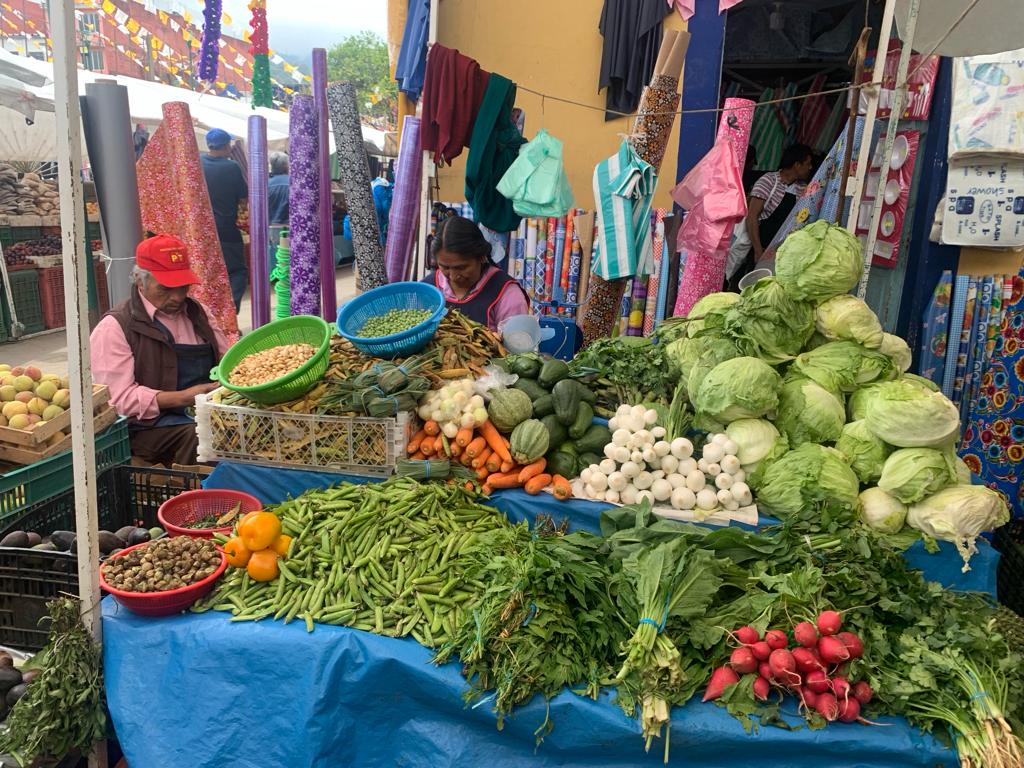
A food market stall in Zacapoaxtla, Puebla, Mexico. Photo courtesy of Elena Lazos Chavero.
Would nutritionists be hostile to the idea of food sovereignty?
Not hostile, but they would say that the most important thing is good nutrition, no matter the means. And for us, we say that it does matter how, and it matters who is in control of the food system.
Ok, so nutritionists might not be interested in food sovereignty. And you can say that’s not really a conflict, because different academics can have their own worlds of discourse. But if academia is to have an influence on public policy, then that is a genuine conflict, because the question is then whose way of seeing the world should we use? How do a nutritionist and an anthropologist work together? Or more broadly, how does someone from the natural sciences – who might be resistant to politics as a threat to their objectivity – work alongside a social scientist explicitly engaged in activist work?
Yeah, you’re pointing out very important issues. How can we work together to influence public policies? We have to find a way to build common ground. I think we don’t have a common understanding of our realities, we give importance to some issues and leave other ones behind. More than that, we have different ontologies and epistemologies to comprehend our realities. So, there are great challenges. From my perspective, we have to establish dialogues and to understand that we have diverse perceptions of our realities based on our interests, conceptions, and cultural, social, and political frameworks of life. And then we can proceed to construct common grounds. But also, we have to be aware of the risks of taking only one concept and fitting it in unequal realities.
Coming back to these discourses of food sovereignty and food security in academia and in policy, we also have to realise the cooptation of terms. For many governments, including the Mexican one, the idea of food security has been much more important as it allows them to prioritise the food industry, and not the peasant or indigenous peoples as the producers of our food. When governments like the Mexican one talk about food sovereignty, it’s like the sustainable development concept. Everybody - industries, politicians, academics - talks about sustainable development from so many perspectives that it becomes blurry: everything goes into the same basket. It has become a buzzword. So for many politicians, they use the concept of food sovereignty to mean something more like food security, than really to give the right to peasants and indigenous peoples to produce, distribute, and consume food under their control.
But official definitions of food security and food sovereignty have shifted over time and seem to have come closer together. Hasn’t there been a real movement of food security thinking towards food sovereignty principles?
In reality, food security and food sovereignty have very different perspectives. Food security problems can be resolved by industrialised food: if you’re meeting nutritional requirements and that’s it, then there’s no problem, it doesn’t matter who is behind the food production. The big difference when it comes to food sovereignty is that farmers should maintain control of production and distribution, and the people should have control of consumption. In Mexico, there are all sorts of contradictions in the system right now: with peasants growing landrace crops but producing for the market, while they eat processed foods because they are cheaper. But of course, the FAO has also been taking into consideration critical arguments against food security: they say they worry about where food is coming from, worry about the smallholders, and pay attention to producers. They say that food has to be culturally adopted and culturally significant and nutritious. In a certain sense they have been enlarging the concept of food security.
Do you think it’s possible to have productive dialogues – between these different worldviews and across these kinds of power divides – that move forward the idea of food sovereignty as it was originally meant, or food autonomy?
I think we should insist on taking a political position in debates about the future of food. It’s possible to have dialogues, but when it comes down to deciding policy, the problem remains that policy makers focus on the end goal without worrying about the means. But there has been some progress for the food sovereignty discourse. Mexican cuisine was declared as an Intangible Cultural Heritage by UNESCO in 2010. There was an expectation by food activists (NGOs, peasant organisations) and academics that the replacement of the milpa system by ultra-processed food would be, if not completely banished, at least more effectively challenged. There have been some interesting developments, for example, where doctors used to prescribe vitamins, they are now telling patients they need to eat guavas, chilli peppers, more beans. So their medical discourse has been changing. But at the same time, another development as a result of this declaration has been the commercialization and commodification of traditional Mexican food. We’ve seen that with the chapulines [grasshoppers], with much higher prices.
The other important thing that happened, in 2011, was the modification of the fourth article of the Mexican Constitution to include a right to food. There was a big movement and a lot of NGOs that fought to get that accepted. So, it was a big achievement, but the question now is what that means in practice.
Do you see those broadly as positive developments?
Yes, in the case of the food rights, definitely yes. Because now, if there is a famine, the government has the obligation to respond. But, again, it is in the how. Because, for example, in 2007, there was a scarcity of maize and the prices rose abruptly – we call it El Tortillazo – when the tortilla prices started to rise rapidly, doubling, or in some places tripling. There were fears of a famine, so the government and industry made a pact. The producers of industrial tortillas set a price limit, and they agreed not to raise their prices above that, while other artisanal producers were charging a lot more. After that, many people were buying their tortillas at the supermarkets, buying processed industrial tortillas of transnational corporations (such as Maseca), instead of in the tortillerias. So this industrial pact made a big difference, and changed people’s habits.
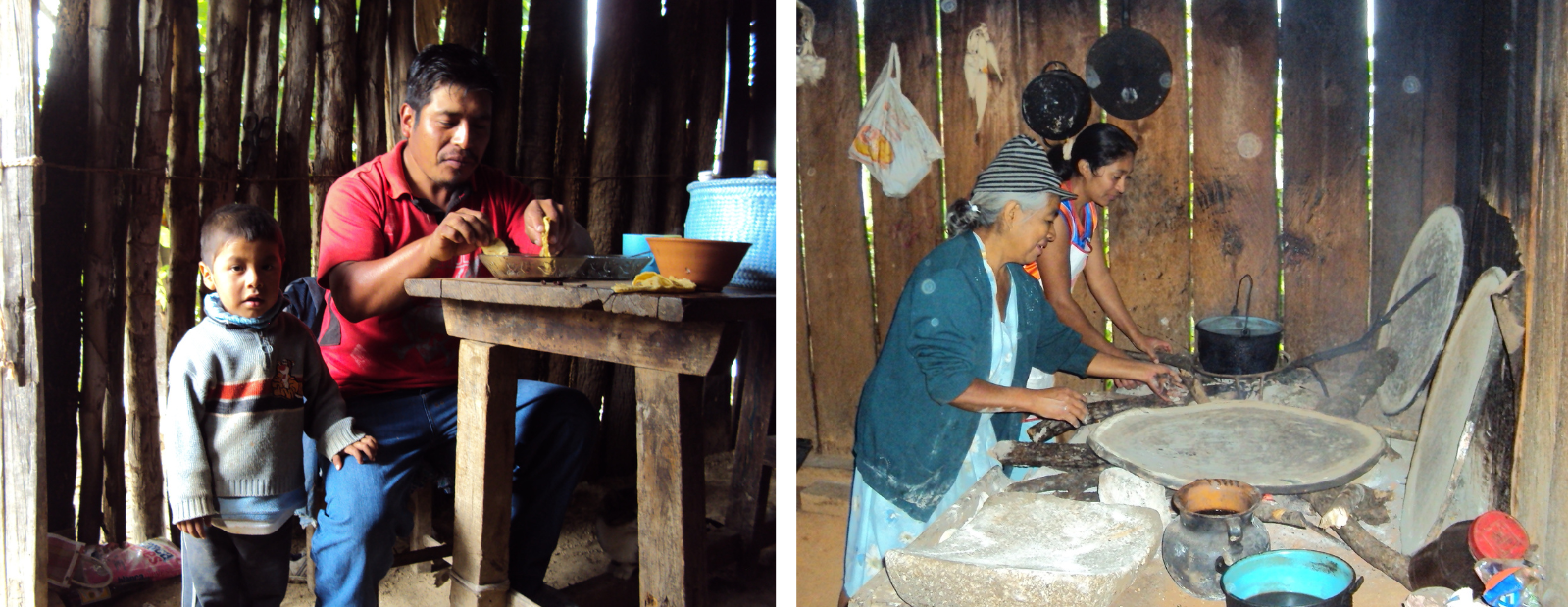
Farmer families from San Miguel Huautla, Oaxaca, Mexico in 2018. Photos courtesy of Elena Lazos Chavero.
It’s interesting that the interventions you’ve talked about are additive: the government intervenes to increase production of tortillas, or to increase support for traditional food by labelling it as Intangible Cultural Heritage, but it doesn’t challenge the power of the industrial systems. Are there any instances of that?
The obesity and diabetes crises are definitely forcing the government to look at measures to control the food industry. They are looking at taxes on refreshments, for example. Now, in all food products sold in supermarkets, the industry has to provide stamps that show if their products are high in sugar and high in salt. People were joking that there was nothing left to eat – everything had a negative stamp – but jokes aside, you did see people being more careful about what they are eating. Still, there is sugar in everything. It’s hard to find yoghurt or oats that are sugarless. And if you’re looking for a sugarless product, the first question the man in the shop asks is “Are you diabetic?”
You’re now visiting the TABLE team in Oxford for a few months. To round off this conversation, what are you hoping to achieve while you’re here?
The exchange of food dialogues is very important. In Mexico or in Latin America, academics and activists are more critical in some ways about what’s in the meal. But, we can easily get married to an idea and we don’t open ourselves to other types of experiences, questions, and critical points. In that sense, exchange of dialogue is very important to bring new ideas in and allow ourselves to be more self-critical about our ideas and discover that others see them in different ways. What I always admired in TABLE dialogues was this critical part: always questioning without first saying whether something is good or bad.
Do you hope to have your views challenged by us while you’re here?
Of course, yes. That is what makes it dialogue.


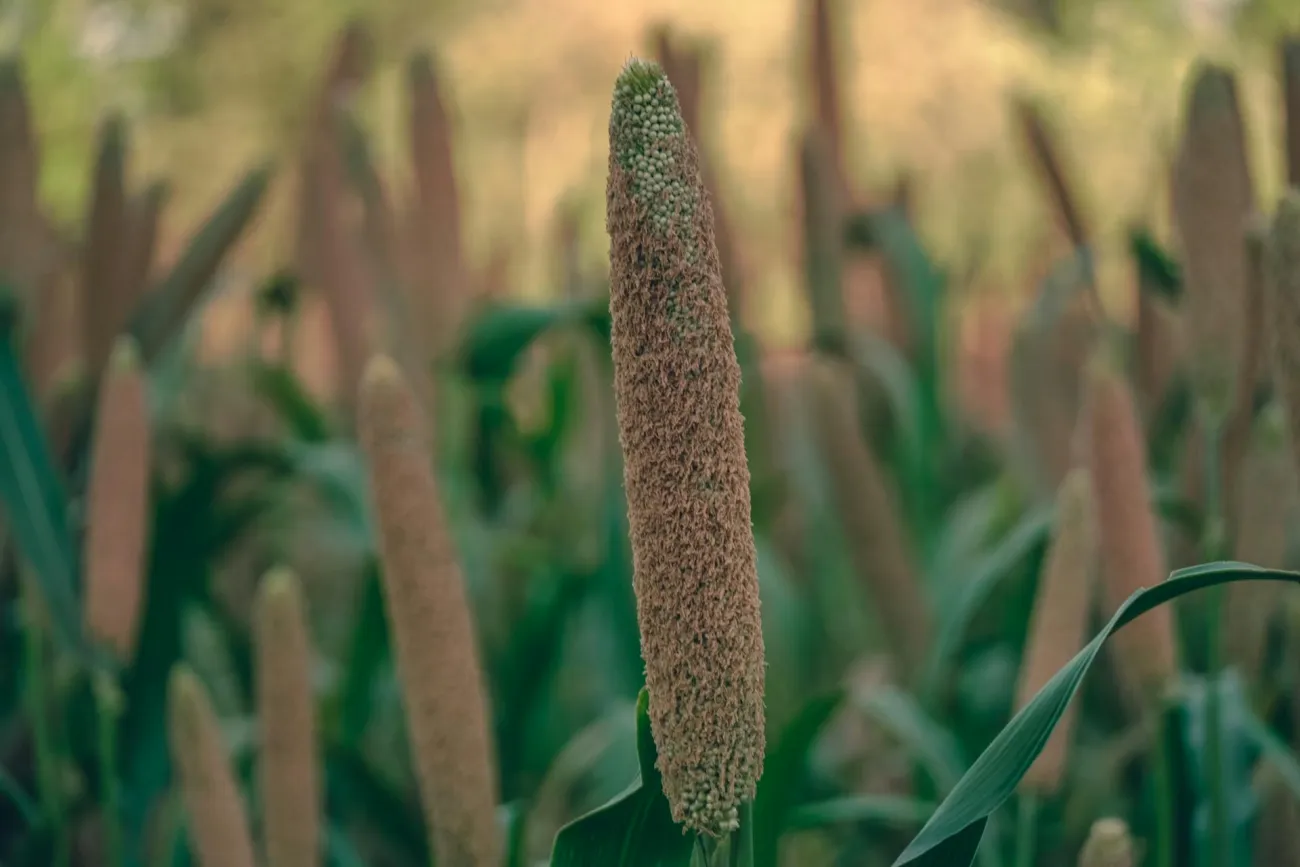
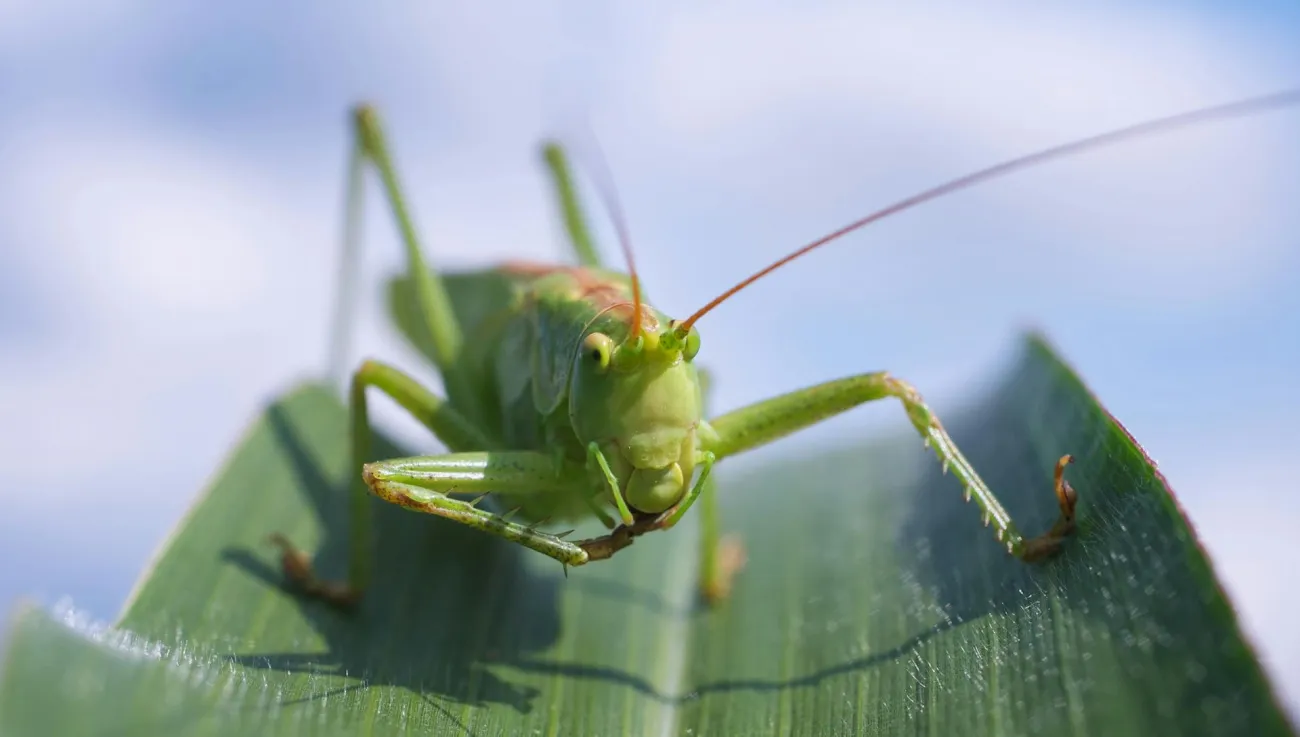
Comments (0)